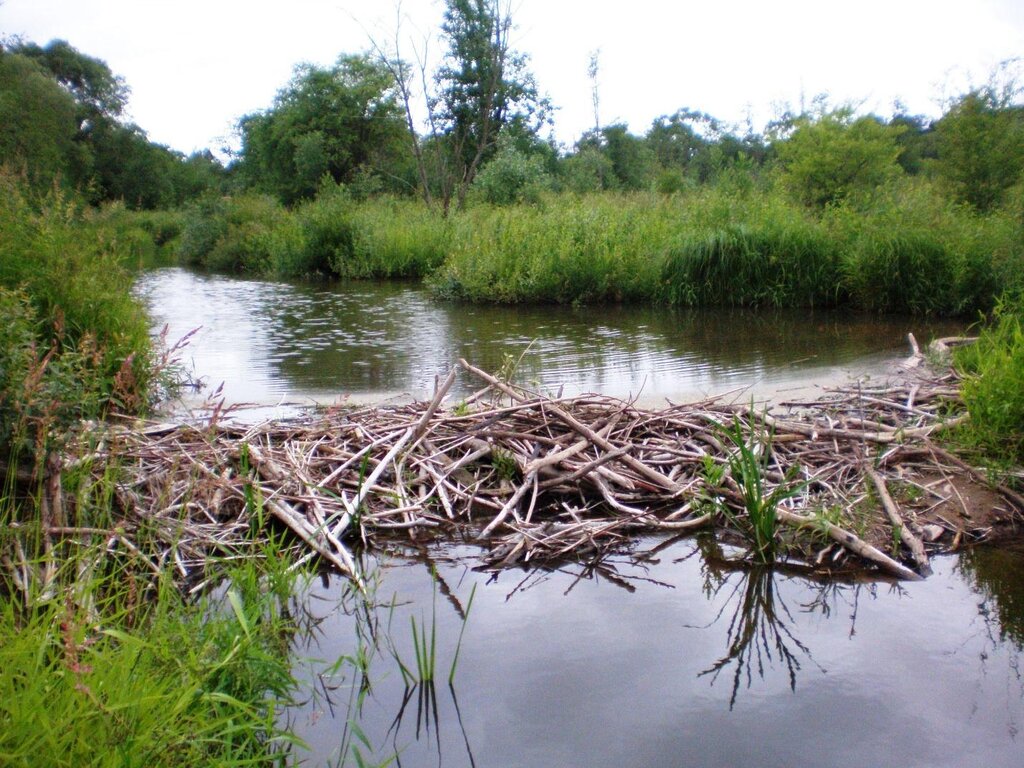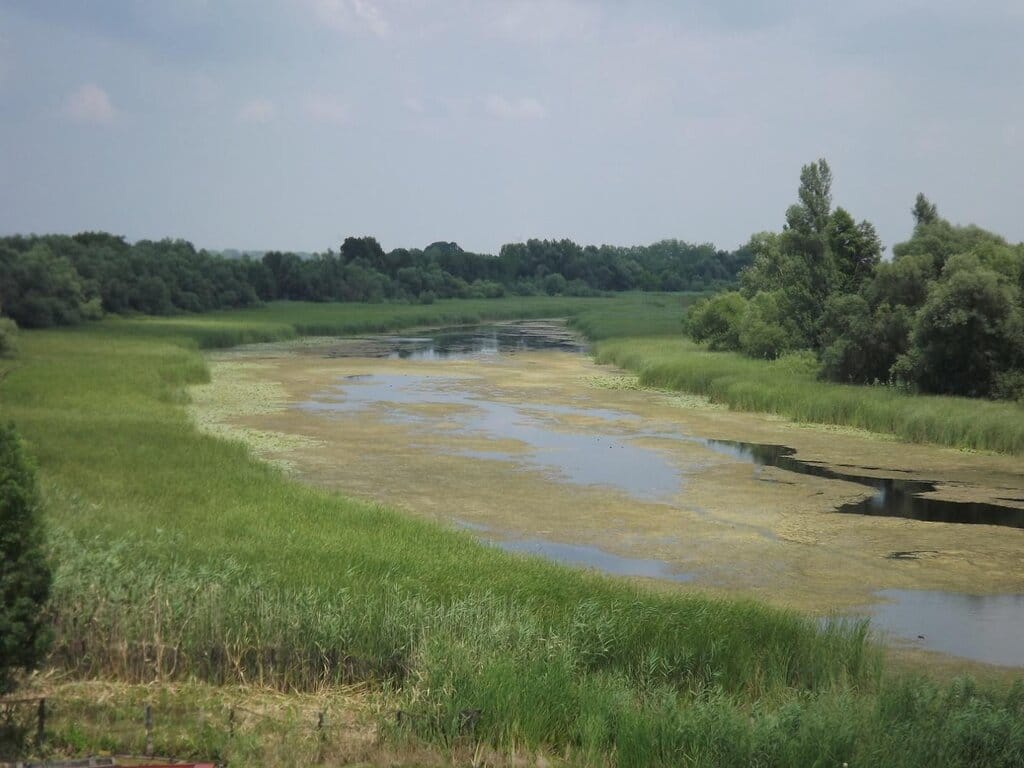By the early 20th century, the world population of the Eurasian beaver (Castor fiber) was estimated to have plummeted to only 1,200. In the times prior to that, this animal had been widespread across both Europe and Asia, as its name indicates. The major reason for the population decrease was human overhunting, which alone caused a total extinction of this species in many ecosystems. Nevertheless, thanks to reintroduction and protection programmes that have been organised throughout the European continent since the second half of the 20th century, the population of beavers has slowly recovered. One such successful story took place in Serbia, a country in the south-eastern part of Europe.
––
The Eurasian beaver (along its North American relative, the Canadian beaver) is the largest rodent in the northern hemisphere. The body of this species reaches the length of 90 centimetres, while its strong, scaled tail approximately adds another 35 centimetres. The tail is arguably the most important body part of beavers, as it helps them complete various actions in water such as rivers, lakes, and ditches where they spend the largest amount of time. As a matter of fact, these animals can rarely be found farther than 50-100 metres away from a body of water they occupy. Beavers use their tails as a paddle while swimming, but also to produce a warning alarm (by slapping the water surface) for an immediate danger, usually imposed by its natural predators including wolves, lynxes, bears and cougars. In such situations, this species protects themselves by diving in the ‘beaver’s lake’, where they can spend up to 15 minutes. To create this lake – which is their home – the beavers build dams of tree trunks and branches.

During that construction process, beavers generate certain economic losses to humans because of the trees they sometimes cut down with the sharp front teeth (‘incisors’) in order to create building material for the dams. Such a barrier, furthermore, can produce alternate river flows and cause flooding of nearby land. However, none of those financial harms were the primary motives of the intensive hunting that led to the near extinction of the Eurasian beaver. Instead, this species was hunted for its fur and a secretion of its scent glands called castoreum, which has been used in the production of medicines and perfumes. Additionally, its meat was also highly valued: for example, some records indicate that, due to the fact that beavers are herbivores, the Catholic Church allowed its consumption during the fasting times (it remains unclear whether other Christian denominations had the similar position). Because of all these reasons, there was a high demand for the Eurasian beavers; so high that by the beginning of the 20th century this animal endured in only four sites in Europe. One of the numerous locations where this species became completely extinct was Serbia.
Long History of the Eurasian Beaver in Serbia
According to archaeological excavations, the Eurasian beaver was present on the territory of modern-day Serbia ever since the prehistoric times. This was particularly true for the northern part of the country – the area that belongs to the Pannonian Plain, a lowland region that remained after the Pliocene Epoch dried out the Pannonian Sea. Based on the paleontological evidence, beavers were present in the Pannonian Plain 15 thousand years ago. The reason behind that strong presence were large rivers (Danube, Sava, Tisa), which created a perfect living environment for this species. One of the largest cities in the Pannonian region was Sirmium, or present-day Sremska Mitrovica (Serbia). During continuous archaeological research of Sirmium, rodent bones have been discovered on a very regular basis. In one particular instance, almost a complete beaver skeleton was dug-out.
A different historical evidence confirms a later presence of the Eurasian beaver in this region as well. Namely, a record of the Swedish naturalist Taube from 1777 mentions his discovery of a large beaver family (of eight members) one mile away from Sremska Mitrovica. Sadly, evidence also shows that the beaver hunting had already began during the 18th century, as another record mentions an entire family being caught in hunting nets near the Serbian town. The fact that this autochthonous species usually lives in families made it particularly easy for hunters. An additional aspect that threatened the beavers in Serbia was drainage of swamp-like areas around the rivers of the Pannonian Plain. Such a practice, done to re-define land usage, reduced the availability of places in which beavers could reside as this animal needs a water basin deep enough not to freeze during the winter period. It is interesting to note that for this very reason, beavers build the dams hoping to ensure the necessary living conditions (i.e deep water for hiding from the predators).
Consequently, the population of the Eurasian beaver in Serbia started to rapidly decrease; the last individuals were recorded in 1903 in Danube, downstream the country’s capital Belgrade. And then, for the next 100 years, beavers disappeared from Serbia. But this bleak situation came to an end in 2004, when a reintroduction programme began in the nature reserve Zasavica, near Sremska Mitrovica – the ancient home of the Eurasian beaver in the Pannonian Plain.
The Return to Serbia
The project, Reintroduction of the Eurasian Beaver, was organised by the Serbian Ministry of Science and Environmental Protection, Faculty of Biology at the University of Belgrade, and a German environmental organisation Bund Naturshutz. The fact that this German society donated 31 Eurasian beavers to Serbia should come to no surprise based on the following statistics: at the end of the 19th century, only around 200 beavers survived in Germany; but, after resettlement programmes, by 2019 this species reached a population of above 40 thousand. In the region of Bavaria alone (from where the beavers arrived to Serbia in 2004), 14 thousand individuals were present in 2019 as a result of the 1966 reintroduction project. The hope was that the same outcome could be achieved in Serbia.
As mentioned above, the Zasavica bog was chosen for the project site. In addition to its historical circumstances regarding the Eurasian beaver, this authentically preserved wetland (and one of the last ones in Serbia) was picked for its biological and ecological parameters. The large and deep Sava river nearby, as well as the wetland characteristics of the area, were accompanied by the abundance of food: “aquatic plants, clover, cereals and corn from the fields and pastures”. Moreover, in Zasavica the ecological organisations prepared and built mounds/dams with a goal to provide an easy adaptation for the newcomers from Germany. Very specific steps regarding the safety of this species were also taken – everyday security service groups and occasional police patrols were put in place in order to prevent any hunting, for which law prescribed very high fines (up to 15 thousand euros).

At the beginning of the project, the four families of beavers (31 individuals in total) were placed five kilometres apart, since one family occupies an area between one and three kilometres and does not prefer to live in a close proximity to another group of its kind. Very soon after, the beaver families in Zasavica began to make additional dams; one of the biggest ones being 30m long and 180cm tall (80 cm above the water). Precisely such a behaviour immediately showed that the imported beavers were adapting to the new ecosystem. Furthermore, the scientists of the nature reserve continuously followed the movements of these animals through the microchips that were placed under their fur upon their arrival to Serbia.
As time went by, the tracking system depicted the Eurasian beavers spreading throughout the entirety of the 33-km-long Zasavica bog and even outside this wetland. However, it is important to mention that the beavers themselves also deserve credit for the successful expansion. Namely, these species are monogamous (meaning they stay with the same partners for many breeding seasons, unlike most rodents) and choose to mate only with individuals that are genetically different from themselves. That, in turn, provides a sufficient genetic diversity to recover a population from as low as three individuals. Of course, this positive outcome in Zasavica would not have been possible to accomplish without the conditions and steps previously described.
Nowadays, it is plausible to state that the population of the Eurasian beavers in Serbia have recovered. Given the fact that the government funding (for the microchip tracking system) had stopped, scientists have not been able to track the exact number of this species in the country; however, the estimates are between two and three thousand. The proof for that claim can be found in the number of locations where the beavers are present today. The nature reserve Zasavica became too small to accommodate new generations, which led to migrations to other rivers throughout the country (e.g. Danube, Sava, Drina, Kolubara, Tamnava, etc.), some of which historically have not been known as beavers’ homes. Additionally, the migrations even reached Serbia’s neighbouring countries (i.e. Croatia, Hungary, Romania, and Bosnia and Herzegovina), but the same also happened in the opposite direction: according to the scientists, the presence of beavers from these countries was noted in Serbia as well.
You might also like: 7 Solutions to Biodiversity Loss
Why is This Reintroduction Important?
The recovery of the Eurasian beaver in Serbia and the rest of Europe is good news for various reasons, which can all be summed up in increased biodiversity. Here are just a few effects of the beavers’ presence in nature: “providing new homes for all sorts of native wildlife, from dragonflies, fish and frogs to water voles, otters and water birds”, “improving water quality and raising salmon and trout populations”, and “reducing the flow of tons of soil and nutrients from nearby fields into a local river system.” Therefore, given that such effects help support the ecosystem, the Eurasian beaver is considered one of the keystone species.

At the same time, some of the negative effects that were mentioned previously deserve more explanation. First, the beaver’s dams that can cause trouble to humans are, in fact, quite fragile and, as such, leak water rather than stopping it completely. Second, the economic cost of lost trees that are cut down by beavers should be understood as a part of nature’s food chain, because this animal does so not to create building material, but to reach and eat “the high and juicy branches and leaves.” Nevertheless, the Eurasian beaver’s lifestyle does have potential to create financial losses to people. Hence ever since the beginning of the 2004 project, the nature reserve Zasavica allowed all human inhabitants of the region to file a complaint for any damage done by this animal. To date, according to the project manager and a biology professor Dusko Cirovic, every proven complaint has been fully compensated by the government.
In conclusion, from all the information given one can see that the project “Reintroduction of the Eurasian beaver,” which began in Zasavica in 2004, was very successful. Above all, the extinct population of this species fully recovered thanks to the international scientific cooperation between Serbia and Germany. Even though both of the countries accomplished similar results in the retrieval of beavers, the reintroduction projects are still ongoing in some parts of Europe. Nonetheless, the International Union for Conservation of Nature (IUCN) announced in 2008 the status of “least concern” for the Eurasian beaver, as it considered this species to “have shown good recovery across much of its range, as a result of conservation programmes.” In regards to Serbia, the Eurasian beaver remains a protected species. The sole recommendation for the scientific and governmental authorities of this country is to work on restarting the monitoring programme, as that would allow clear data about the numbers of the Eurasian beaver and its movements throughout the region. Such a step would most arguably prevent the dark history from repeating itself.


















